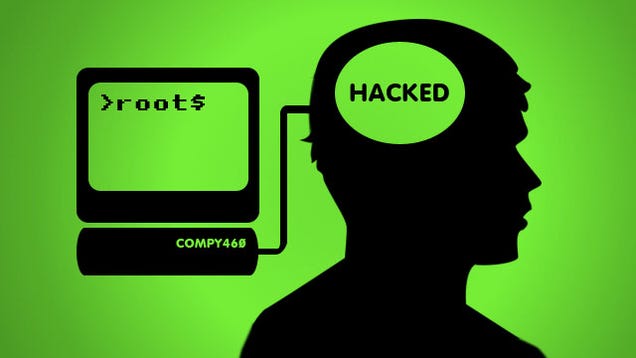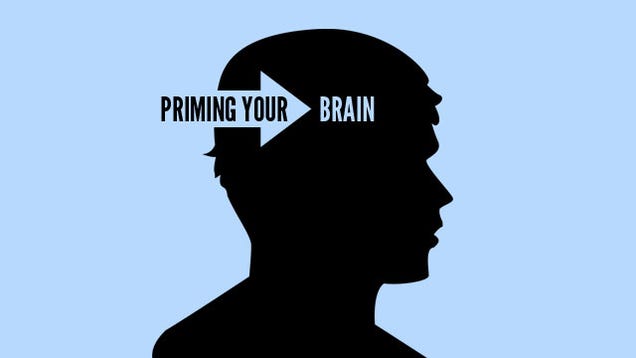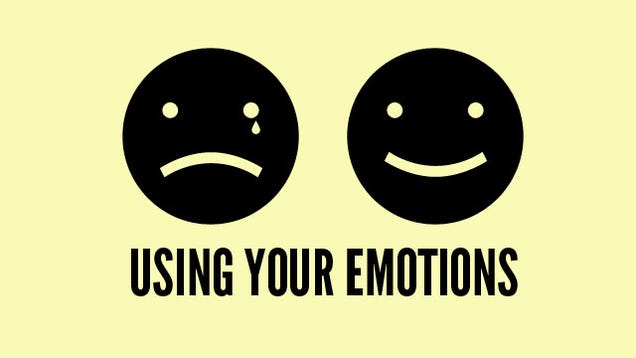
You are not who you think you are. Your personality and identity is significantly more malleable than you realize. With a few simple tricks, you can exploit your brain's innate functionality to change just about anything about yourself. Here's how.
You Are Not Necessarily the Person You Think You Are

You are not who you are, but rather the product of many influences. The saying "you can't teach an old dog new tricks" exists for a reason: the longer you've been the person you think you are, the harder it becomes to change. The thing is, you can dramatically change who you are. It's actually not so much that it's difficult to change, but that you've developed patterns and habits that make it easier to do things the way you do them. Trying something in a new way can feel very awkward, it will be generally less efficient by virtue of being something new to you, and it often lacks excitement for you when it involves giving up the comfort associated with your way.
That's not to say you aren't born with some inherent abilities, but most of what you consider part of your identity is a product of influence. While we don't know the exact ratio of nature to nurture, there is undoubtedly a combination of both that makes us who we are. We have a tendency to think that change is difficult, but it's really just a matter of changing your influence. You're probably familiar with Stockholm syndrome-the term used to describe how hostage victims tend to develop positive feelings towards their captors. Stockholm syndrome isn't a kind of brainwashing by the captor; instead, the victim adapts to the poor situation he or she is in. If most people can adapt to something as awful as being kidnapped, most people can adapt to smaller positive changes in their own lives. You can even make enormous changes if you're willing to put in the work and you provide yourself with the proper influences. We're going to look at how to do that on high and low levels, from priming your brain to manipulating your own emotions, and also look at how your environment and the people you know shape your life.
Most of these methods won't make you feel comfortable, and, at times, they may sound a bit crazy, but it is possible to "hack" your own brain. Here are just a few ways to do it.
Priming Your Brain

Priming is a ridiculously simple technique because all it involves is talking to yourself. On the dull end of the spectrum, it's similar to self-affirmation. On the crazier end of the spectrum, it bears some similarities with neuro-linguistic programming. Priming your brain involves reciting a given set of words that are designed to alter your mindset. It is not brainwashing and it cannot make you do anything you don't want to do. What it can accomplish, however, is putting you into a state of mind that will be more useful to you with a given situation or task.

Before we get into the specifics of how to prime your brain, let's talk about how and why it works. If you were to say the word mustard out loud, and then you were to see a portion of the word later, you'd be reminded of mustard. For example, if you were to say "I must have this" you might be reminded of mustard because of the word must. If you were hungry and liked mustard, you may even want some. It's the same phenomenon that compels you to buy a particular brand of shampoo that you saw on television even if you 1) don't remember seeing the commercial, and 2) couldn't care less what kind of shampoo you use. This is essentially how priming works, and it's all thanks to your memory.
While you're not going to remember everything you say, that doesn't mean what you say is gone forever. While everything stored in your recent memory may not be immediately accessible, all you really need to bring something up is a trigger word. This is conceptually similar to using acronyms as a memory tool (e.g. Roy G. Biv) but isn't designed to help you actually remember anything. Instead, the goal is to place common words that, when apart, have no real specific value, but when together, have an associative value that make you think of happy things, sad things, specific people, or ambition. If any of those common words come up again later in the day, you'll immediately associate that word with the associative value of the group. Here's an example:
-
drive
-
objective
-
important
-
create
-
commitment
-
purpose
-
enthusiasm
-
eager
-
motivation
This is a list of words synonymous with or related to ambition. It's designed to be read aloud to put you in a more ambitious mindset, focusing your thoughts and priming your brain to react ambitiously when these words, or portions of these words, come up later in your day.
Another exercise involves taking a shorter list of priming words and making a sentence with it. Here's an example:
These words can form the sentence "the girl looked and smiled," which should bring to mind pleasant associations for most people. Constructing sentences out of word lists (which you can create yourself) can help put you in the right mindset.
These two methods can be used to prime your brain. They are not magic tricks that will instantly make you feel happy, ambitious, or whatever, but they can help to provide you with the mindset you need to better accomplish your daily tasks.
For more reading on priming, and a look at some really interesting studies, don't forget to check out the references for this article.
Using Your Emotions

If you've ever found yourself making out-of-character decisions based on your emotional state—such as binging on ice cream after a breakup—you know how easily your feelings can overtake your actions. Rather than letting your emotions lead you towards poor judgment and irrational behavior, however, you can learn to compensate for different emotional states and to fabricate emotions to alter your mood. In order to do that you need to, simply put, get in touch with your feelings. The idea isn't so much to cry into a pillow about your wasted childhood, but understand what you're feeling when you're feeling it, what the root cause is, and what you can do about it. We're going to take a look at how you can dissect your emotional state to use it to your advantage, and also look at how you can fabricate emotion to change how you're feeling.
Take an Acting Class

You can't really control your emotions if you don't understand them, and one of the best ways to understand them is to take an acting class. To some this may sound fun, and to others this may sound like hell. Love it or hate it, acting lessons are one of the best ways to explore how and why you feel certain things. Your goal should be to find a class that will make you uncomfortable every time you go. In my experience, any class teaching the Meisner technique is very effective if you put a lot of effort into the exercises. It can be slow, tedious, and uncomfortable, but it's capable of bringing out emotion you might not realize you had.
Make Yourself Uncomfortable

Your emotions aren't in full force if you're not really doing anything, so you need to put yourself in uncomfortable situations in order to bring them out. This doesn't mean you should make yourself feel horrible, but that you should go out and do things that you might resist because you're worried about the downsides. Meeting new people is something that makes most people uncomfortable, and it's a great place to start, especially if it's a first date. Try new things that scare you. If you notice you're glued to the couch and don't want to get up, do the opposite. Spend time with people you don't like. Go to a movie you're sure you'll hate. Your experiences won't always be pleasant, but they should incite emotion that you can later analyze and better understand.
Keep Track of How You Feel

Like an abbreviated diary, every time you have an emotional reaction to something, write it down. You don't need much detail, but just a sentence or two noting the emotion you're experiencing and the (possible) cause. For example, I get extremely irritable when I'm hungry. I will lose my temper far more easily when I'm hungry, so whenever I notice myself thinking irrational (and sometimes hateful) things, I always remind myself that I'm just hungry, I'll eat in a minute, and the "asshole" who accidentally missed the garbage can and didn't notice is mostly a result of my frustrated stomach. Until I started to pay attention, I never really noticed that I was a jerk whenever I was hungry. Instead, I just thought I was a jerk. This is a simple example, but the point is this: pay attention to how you feel and the other issues currently present, and you'll find it much easier to manage your negative emotions.
Emote in Front of the Mirror

Fabricating emotion is difficult. Once you understand your emotions you'll find it a bit easier, but it helps to be able to recall how it feels, physically, to emote. We all know how to smile, for example, but you can probably count more fake smiles in family photographs than you can real ones. If you don't know how to create an authentic smile (also known as the Duchenne smile), it will be very obvious to everyone around you.
The easiest way to learn to fake expressions is to practice them in the mirror. You can try them out to see what you look like and you'll immediately know if they're passable or not. You'll also note that it feels physically different to create an authentic-looking emotion than it does to create a fake-looking emotion. For example, an authentic smile shows more in the eyes than it does in your mouth. When someone smiles a true smile, their eyes wrinkle (creating "crows feet") because a new musicle—the orbicularis oculi muscle—is used. You'll come to remember this feeling and be able to replicate it away from the mirror after a little practice.
It's not necessarily easy to emote in front of the mirror, but that's not as hard as you think. If your goal is simply to learn to smile better, you'll get there if you just stare at yourself for awhile. Eventually it will get so ridiculous that you'll have to laugh. If you're less patient, you can try to make yourself laugh by making strange faces or just being ridiculous. If you're comfortable, have a friend over to help. For other emotions, you simply need to find a source of that emotion and bring it into play in front of the mirror. If you've employed any of the previously discussed techniques, you may already have a reserve. Alternatively, watch a movie that makes you laugh or cry and do it by the mirror. (Yes, this is absolutely a strange thing to do, but it'll work.) If you're interested in anger, you should have no problem getting there by just complaining to yourself or to a friend on the phone.
Emoting in front of the mirror is going to be strange and awkward at first, but after a few tries you'll get the hang of it and be able to create authentic expressions on demand. These expressions do surface from genuine emotion, so repeating them can actually make you feel happier/sadder/angrier/etc. through repetition. If you need to change your mood and your mindset, the ability to fake it ‘til you make it is very, very useful.
Consider Your Health

Anything you do is much easier if you're healthy—and that goes for mental as well as physical health. These methods won't be terribly helpful if you're seriously depressed. If you're not sleeping, eating well, and/or getting a reasonable amount of physical activity in each day, you're going to find them difficult as well. You can do pretty much everything better if you take care of your mind and your body, so don't look at anything you've read here as a panacea for the problems in your life. Everything here assumes that you take reasonably good care of yourself and generally start your day in a good place. If you're not feeling good on most days, you need to take care of those problems before you decide to start playing mind tricks with yourself. Always be healthy first.
You can contact Adam Dachis, the author of this post, at adachis@lifehacker.com. You can also follow him on Twitter and Facebook.
























